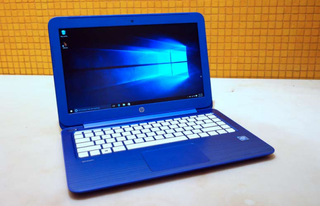Microsoft Goes Public About Data Collection in Windows 10
Ever since the operating system was first released, Windows 10's privacy settings have had an air of mystery about them, and many users have been distrustful. We didn't know what Microsoft was recording, either through the virtual assistant Cortana, or through its convoluted data-sharing options. Some users even suggested that Windows 10 had its own keylogger.

Today (April 5), Microsoft went public with exactly what kind of data the operating system collects in both its "Basic" and "Full" levels.
You can find the list of information for the Basic level in a technical blog posting here, while Microsoft's explanation of the data collected is here. There don't seem to be any surprising bombshells in the list, but we look forward to privacy experts parsing the data and hearing their opinions.
Specifically, the Basic tier is supposed to collect only information that Microsoft needs to see how Windows 10 works on your specific hardware. That's so it can tell whether bugs are attributable to certain parts, devices or specs.
MORE: Why You Shouldn't Worry About Windows 10 Privacy
Terry Myerson, executive vice president of the Windows and Devices Group at Microsoft, wrote in a more PR-friendly blog posting that "our teams have also worked diligently since the Anniversary Update to re-assess what data is strictly necessary at the Basic level to keep Windows 10 devices up-to-date and secure."
In the same posting, Windows and Devices Group Privacy Office Marisa Rogers gave a step-by-step tour of the "privacy dashboard" that users will see after they install the Windows 10 Creators Update this month. The dashboard has toggle switches for five different types of data collection, including "Location," "Speech Recognition," "Diagnostics" and "Relevant Ads," alongside explanations of what each permission actually does.
Stay in the know with Laptop Mag
Get our in-depth reviews, helpful tips, great deals, and the biggest news stories delivered to your inbox.
For now, Microsoft has to hope that this clears the air around Windows 10, and that users can finally feel comfortable when they know exactly what gets collected.
Photo: Jeremy Lips / Laptop Mag
Windows 10 Basics
- 7 Settings to Change Right Away
- Windows 10 Keyboard Shortcuts to Save You Clicks
- 5 Ways to Take Screenshots
- Change Your Password in Windows 10
- Uninstall Programs in Windows 10
- Enable or Disable Tablet Mode
- Add a User (Child or Adult)
- Change the Screen Resolution
- Sync Your Settings Across Devices
- Sync iPhone with Windows 10
- Control Windows 10 with Your Voice
- Upgrade to Windows 10 From Windows 7 or 8
- Eliminate Blue Light With Night Light
- Create a New Folder
- Get to the Desktop in Windows 10
- Add a Printer
- All Windows 10 Tips
- Set Alarms
